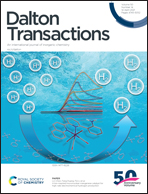Preparation of organocobalt(iii) complexes via O2 activation†
Abstract
The coupling of selective C–H activation with O2 activation is an important goal for organic synthesis. New experimental and computational results, along with the results from experimental work accumulated over many decades, now unequivocally link O2 activation with C–H activation by the classic Co(salen) complexes. A common holistic mechanistic framework can rationalise the formation of ostensibly diverse peroxo, superoxo, organo and alkoxide complexes of CoIII(salen). DFT calculations show that cobalt(III)superoxo, dicobalt(III)peroxo and cobalt(III)hydroperoxo complexes are all viable intermediates as participants in hydrogen atom transfer reactions, whereas a Co(IV)oxo intermediate is unlikely. The reaction conditions will determine the pathway followed and all pathways are initiated through the initial formation of a superoxo complex, CoIII(salen)(O2˙)(MeOH) (EPR: g = 2.025, A = 19 G). Organo and alkoxide ligands are derived from solvent media and the trends in reactivity reveal that combination of the pKa and BDE of the C–H of the respective solvent substrates are important. These data explain why landmark, structurally characterized, μ2–η1,η2-peroxide and η1-superoxide Co(salen)–O2 adducts were predominantly isolated from solvents with high C–H pKa values (DMSO, DMF, DMA).



 Please wait while we load your content...
Please wait while we load your content...